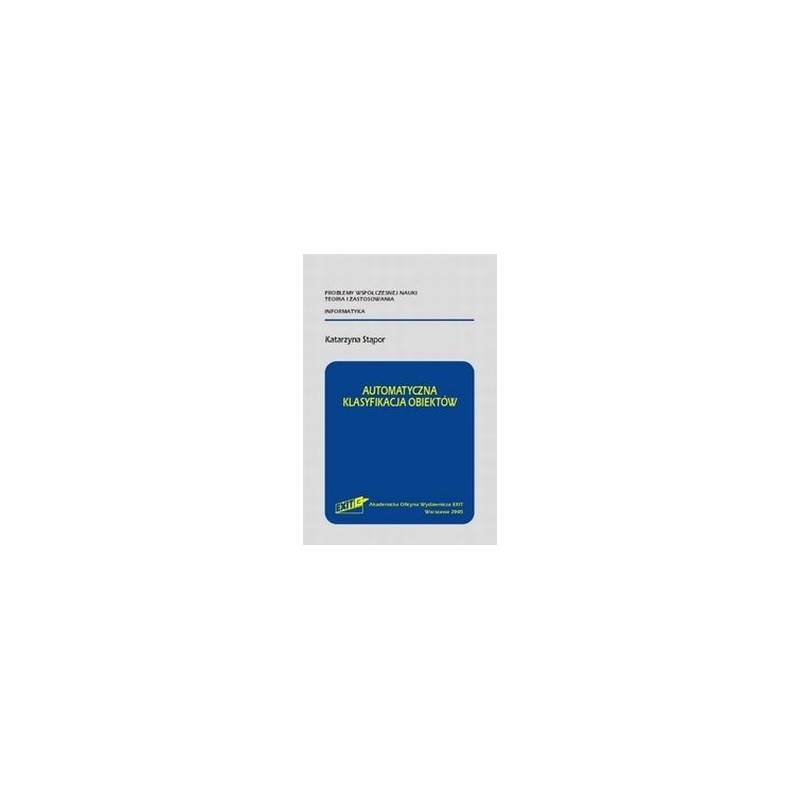- Out-of-Stock




free shipping in Poland for all orders over 500 PLN

If your payment will be credited to our account by 11:00

Each consumer can return the purchased goods within 14 days
About the book
The book discusses the basic elements of automatic object classification systems. Within the supervised classification, empirical Bayes classifiers and directly defined classifiers are presented, including the supporting vector machine and the multi-layer perceptron. Among the grouping algorithms, selected algorithms of iterative optimization, density and graph algorithms as well as algorithms using neural networks are presented. All discussed algorithms are illustrated with practical examples with the participation of generated learning sets. In addition, applications of classification algorithms in computer vision systems are shown: recognition of geodetic maps and support of the diagnosis of glaucoma in ophthalmology.
The book will be useful to a wide group of readers involved in the design and creation of automatic object recognition systems in various fields, as well as students of the fields of Information Technology, Automation and Robotics and Bioengineering.
No product available!
A small motor with a plastic gear 120:1, the output shaft with a diameter of 3mm in the shape of the "D", operating voltage 4.5 V, current consumption from 0.08 A to 0.8 A, speed 120 RPM and maximum torque 1.4 kg*cm. Pololu 1125
No product available!
No product available!
UDOO-NEO EXTENDED is a single-board computer with a dual-core ARM processor (Cortex-A9 and Cortex-M4 in one system), 1 GB of RAM, Linux, Bluetooth 4.0, Wi-Fi, and IMU.
No product available!
No product available!
No product available!
No product available!
No product available!
No product available!
No product available!
No product available!
No product available!
No product available!
No product available!
No product available!
DIGITAL SOLDERING STATION WITH PID CONTROLLER AND GRAPHIC LCD DISPLAY - PLATEBOARD AND PROGRAMMED LAYOUT
No product available!

